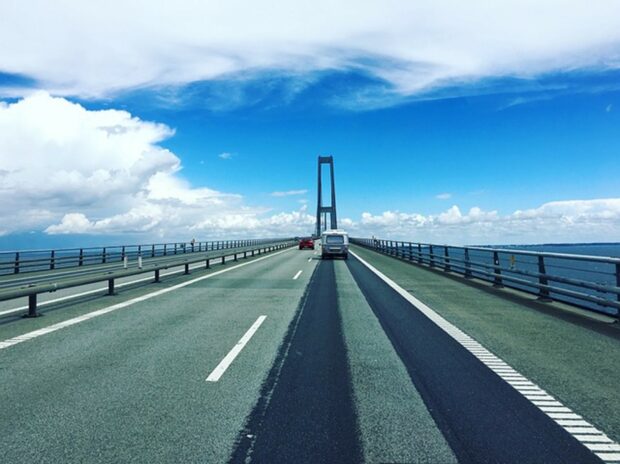What Are Basic Road Rules For Driving A Hyrbil (rental car) In Sweden

What Are Basic Road Rules For Driving A Hyrbil (rental car) In Sweden
When traveling throughout a foreign country like Sweden, visitors will generally use public transport to take in the beautiful scenes and varied tourist attractions. The suggestion is that it’s much simpler to become familiar with the subway or train schedules and find out where the stations are located than to educate on the roadways and their rules in order to attempt to drive in new territory. That’s especially true if there’s a language barrier.
The beneficial thing about a billig hyrbil (cheap rental car – in Sweden) is the low cost plus the freedom to go wherever you please when you choose. Many travelers find that appealing since they like to travel off the beaten path to see the beautiful landscapes outside the city, not included on the tour schedules, and where public transport doesn’t venture.
For visitors to Scandinavia who want to escape to the idyllic mountains, lakes, forests, and islands of Sweden, a car hire is an ideal way for traveling since the Swedish roads boast some of the most well maintained, with among the best secondary roads and highways found in Europe.
Aside from the occasional wildlife like the stunning elk or moose, drivers will have few issues with traffic on the outskirts of the bigger cities. However, it’s still wise to take the time to research and educate on the primary road rules to avoid potential problems while among the local traffic.

What Are The Basic Road Rules For Driving A Hyrbil (rental car) In Sweden
People who travel from around the world to Scandinavia hope to see Sweden’s beauty while on holiday. Since it would not likely be on any of the tourist packages on their schedules to go outside the limits to the countryside, nor would public transportation carry passengers.
The tourists desire to see the serene lakes, mountains, forests, and islands of the beautiful country. These travelers prefer to educate on the roadways and rules of the road so they can hire a car and drive freely where they want and when they choose to go.
Fortunately, on the outskirts of the bigger city limits, there’s minimal local traffic to be concerned with, so drivers are forgiven mistakes more readily. It’s when you get back to “civilization” you need to be mindful of the regulations ensuring that you fall in line with the course that everyone else is following to avoid disrupting the flow. Some of the things to be mindful of in Sweden:
Driving mandates
Visitors to Sweden from the United States who wish to hire a car have relatively straightforward rules for their driver’s license. As long as the age of the driver is 18 years old, the United States driver’s license will be valid in the country while remaining valid at home.
Those who choose to stay in the country for an extended period, perhaps longer than a year, will be required to get a legal Swedish driver’s license. In order to hire a car, drivers need to be no less than 20 years of age and have held a driver’s license for no less than two years. The following checklist applies to driving requirements in the country:
- Proof of registration
- Driver’s license
- Studded tires (winter driving)
- Insurance note
- Warning triangles

Road rules
Scandinavian country laws are comparable to the regulations within the United States, but some distinct differences need noting. You can find varied apps that will update you on each country’s most pertinent laws, including “distracted” motorists, traffic lights, rules for seat belts, and on. Check some of these out for this country.
- Right-sided driving: Drivers will travel on the right side of the roadway in Sweden with the capacity to pass slow vehicles by maneuvering around on the left, but it needs to be done with care and following the safe driving rules.
- Distances: Distances in Sweden are marked in kilometers with 1 kilometer equivalent to 0.6 miles. The cars for hire will all be designated in kilometers with mileage and speed.
- Speed signs: These signs are discerned as a yellow, round sign that is outlined in red. For city speeds, you will find limits at (31 miles per hour) 50 kph, country roadways wide open (55 miles per hour) 90 kph, and on highways (68 miles per hour) 110 kph.
- Seat belts: All passengers, including the driver, anyone in the front of the car, and everyone in the back of the vehicle, must wear a seat belt any time the car is in motion.
- Kids / Car seats: Any child age three years or younger are required to ride in an appropriately-sized car seat. That also applies to a child that is under 1.25 meters (4’5″) tall.
- Headlights: Headlights are to be used at all times whether the sun is shining or not. Other motorists might have the inclination to flash their headlights to warn you if your lights are not on.
Vehicles sold in the country are set to have the lights switched on automatically. That means you won’t need to be concerned with this when renting a car.
- Driving while drinking: There are stringent rules on driving under the influence of alcohol in Sweden. The police can issue breathalyzer testing without their needing a reason for the request. Anyone with a blood alcohol content resulting in over 0.02% will receive a hefty fine and possible jail time.
- Cycling: Motorists are expected to respect the designated bike lanes and those cycling on the roadways. These lanes are prevalent in Scandinavia, with riders in the bike lane being given the right of way as long as they’re in the lane.
- Toll: Cars registered in foreign countries and Swedish cars need to pay tolls at all times of the day for the bridges that cross Sundsvallsfjärden / Motalaviken. Otherwise, motorists will generally have no tolls to pay for Swedish roadways.
- Emergencies: In Sweden, when a motorist has an emergency, you can contact the local police or fire and rescue at 112. The regulations state that you need to stay where you are at the scene until the response team has received all the emergency details.
If you have car trouble and break down or stall out alongside the road, specifically on a roadway where the limit is 50 kph or more, a warning triangle needs to be placed behind the vehicle roughly 100 meters.

Car rental in Sweden
Taxis in Sweden have the consideration as an expensive form of transportation with public transport deemed a better option. Many visitors to the country find the train network advantageous along with the buses and coaches.
Still, one of the simplest options for touring the country is renting a vehicle if you’d prefer to travel freely.
Rental service agencies will typically allow travelers to drive where they prefer throughout Western Europe, with the least requirements being to view a passport and foreign driver’s license. Insurance is a variable with rental companies.
Final Thoughts
One thing to be aware of when traveling throughout the countryside is the wild animals of varying sizes which can be seen at any time of the day. These are even observed in some of the urban areas since fence rows often won’t deter them.
When renting a car, the idea is to prevent damage, so it’s essential to pay attention for these to run out into the road, especially badgers and foxes, quite common for getting hit in the roadways.
Some of the larger animals to be mindful of are deer, wild boar, and moose running out into the roadway, for which you need to pay attention, particularly when the sun comes up or goes down. Always call emergency services and stay with the car until they arrive.
Other than that, it seems you will be relatively well prepared for a lovely road trip to the stunning Swedish countryside.
Guest Article.




